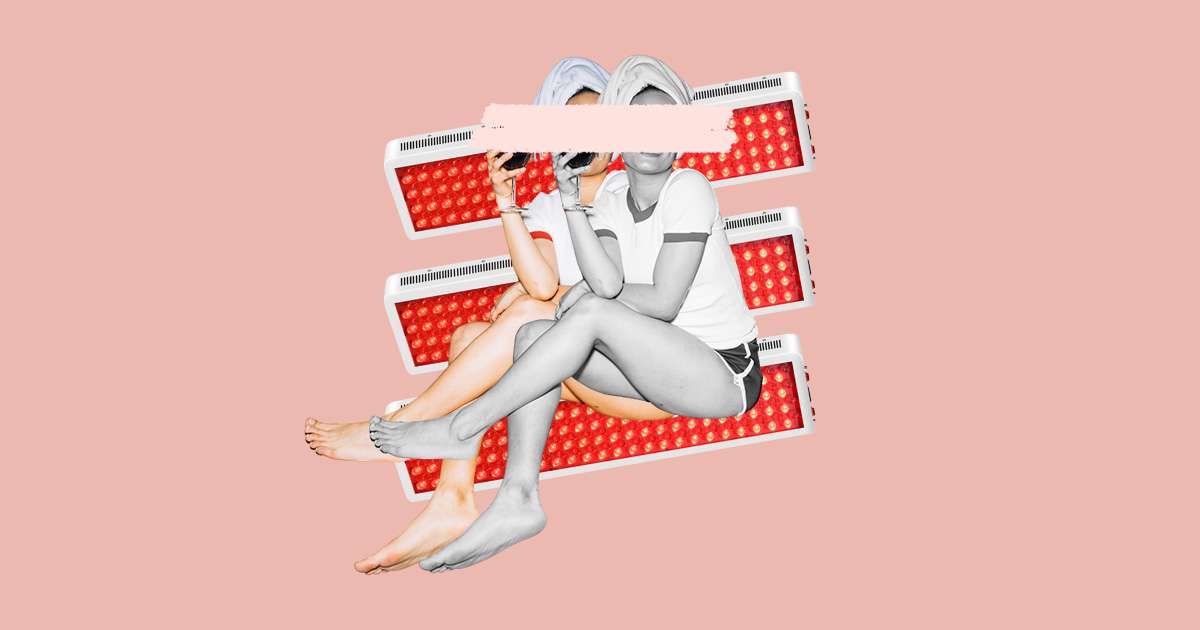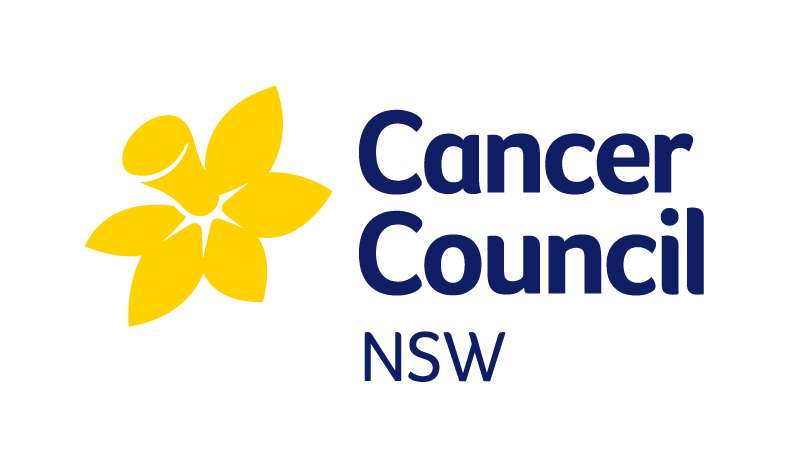If you’re a member of the skincare and wellness-obsessed club like me, you have go-to treatments that help you either achieve a glowing complexion or zen out. And while we should make time for all the self-care, let’s be honest: It doesn’t always happen. If only there was an all-encompassing remedy that checks off all the boxes…
Behold: red light therapy (AKA RLT). The latest “it” method to hit dermatologists’ offices, spas, gyms, and even homes alike promises everything from skin-enhancing perks to anxiety-alleviating effects. The skeptic in you might be saying, “Is it legit?”, so I turned to experts to get the full scoop on red light therapy. And, of course, I had to see (and experience it) for myself. Ahead, a breakdown of RLT and what happened when I gave it a whirl.
What is red light therapy?
Considering you’re a fellow wellness junkie, my guess is you’ve seen influencers and celebs donning light-emitting diodes (AKA LED) masks (some reminiscent of horror movies, IMO) flooding your TikTok and IG. Well, they’re treating their face to the magic of RLT. “Red light therapy is a novel light-driven treatment that applies low-level lasers or light-emitting diodes to deliver red, far-red, or near-infrared light targeting to modulate cellular metabolism and the functioning of a variety of tissues, including the central nervous system and the brain,” explained Dr. Julie Landry, a board-certified clinical psychologist. In other words, the non-invasive practice sends red wavelengths of light through the skin that our cells absorb and convert to energy, leading to a host of benefits (more to come on that).
But the regenerative goodness doesn’t stop at your face and masks at home. You can get your glow on in the form of full-body light panels and beds popping up at health-minded hotspots. So how do red light therapy DIY devices compare to treatments you’d find at, say, a health and fitness center? “At-home options cost less and can be used whenever it’s convenient,” said Eden Danaher, Manager of Upgrade Labs Human Upgrade TM Centers in Santa Monica and Beverly Hills, the world’s first biohacking (read: the practice of altering your biology for optimal performance) health and fitness facilities taking workouts and recovery to a whole new level. On the other hand, “Professional treatments are more powerful than the at-home varieties, so users can see results sooner and need fewer treatments.”
What are the benefits?
Anti-aging
According to a study from The Journal of the American Academy of Dermatology, RLT has been shown to augment tissue repair, promote regeneration and skin rejuvenation, and boost the production of hyaluronic acid, collagen, and elastin. The result? Getting a leg up on fine lines, pore size, texture, and wrinkles.
Stimulate healing and reduce inflammation
Sounds too good to be true that light can reduce inflammation in the body? A study by Dr. Hamblin of Harvard Medical School may suggest otherwise. When cells absorb red and near-infrared light, ATP (an energy-carrying molecule found in cells), oxygen, and protein production increases, creating anti-inflammatory agents and speeding up healing. To sum it up, RLT can reduce inflammation in the brain, abdominal fat, wounds, lungs, and spinal cord.
Muscle recovery
Listen up, fitness fanatics: this one is especially for you. Based on a study determining the effectiveness of RLT on muscle recovery, subjects who received RLT immediately after exercise experienced significantly reduced muscle soreness, muscle strength loss, and range-of-motion impairments. What’s more, another study found that RLT used on college athletes with a wide range of injuries substantially (and safely) reduced their recovery time (nearly twice as quickly as those who did not receive the treatment).
Mental health
While Dr. Landry explained that further studies are needed to confirm efficacy, clinical guidelines, and dosing standards, she cited that red light therapy has recently shown promise as a treatment for depression, anxiety, PTSD, and traumatic brain injury. A study in Behavioral and Brain Functions also found that RLT may help improve depression as soon as two weeks after a single treatment. Talk with your doctor, therapist, or psychiatrist if you’re interested in adding red light therapy into your mental health routine. Know that more studies need to be done on RLT’s effect on mental health, but if you’re interested in trying it for the other benefits, boosted mood may just be a fringe benefit.
Are there any side effects or drawbacks to it?
As with any beauty or wellness program, it’s best to do your homework and check in with your doctor to make sure RLT is safe and effective for you. But generally speaking, there are little to no known risks tied to it. “Red light therapy is relatively safe to use, as it does not contain any UV rays,” said Vanessa Coppola, FNP-BC, a board-certified nurse practitioner, aesthetic specialist, and Owner of Bare Aesthetic Medical Spa. “Although many studies have indicated the potential for benefits of red light therapy, the current literature is lacking in conclusive evidence for its benefits. Bottom line, it appears relatively safe to use, it may help, but there is no current hard evidence that it actually does.”
Danaher added that people on Accutane and other medications that can make the skin photosensitive (sensitive or reactive to sunlight) should avoid RLT. Additionally, RLT should not be used in the case of pregnancy, heart disease, melasma, or hyperpigmentation.
My experience
Is red light therapy really the holy grail of skin and wellness treatments? I went to Upgrade Labs in Beverly Hills to find out. I stepped into my private room and settled onto the futuristic-looking bed of red LEDs in nothing but my Hanky Panky underwear and goggles (I was told it’s best to have direct contact). Almost immediately, the warmth of the lights put me in a relaxed state, and I fell fast asleep until the 20-minute mark to turn over. As an added bonus, there was a mobile RLT panel that hovered over my face—you better believe I was going to bathe every inch of my body in the light to get the most out of it.
My final verdict: I would give RLT an 8/10, mostly for its soothing and muscle recovery effects. I had a killer leg sesh before basking in the glow of RLT, and normally I’d be waddling the next day, but to my surprise, I didn’t wake up feeling like I couldn’t walk. While I didn’t notice a change in my complexion, I did get a solid, restorative night of Zzzs without any interruptions. It was a welcomed change since I usually wake up in the middle of the night thanks to all the water I drank taking my nighttime supplements or by my to-do list taunting me. And for the crème de la crème of benefits, I felt after RLT: a sense of being more grounded. It’s safe to say that I’m normally riddled with worry and anxiety, but during and immediately after the 40 minutes of bliss, I was able to tune out the excess noise and reconnect with my body. I was calm, yet simultaneously recharged the rest of the day, with my mind and body at ease. The fountain of youth, closest thing to a cure-all, an all-natural wellness experience—call it what you will. I’m all for it.
Get red light therapy at home
Please consult a doctor or a mental health professional before beginning any treatments. Always seek the advice of your physician or other qualified health provider with any questions you may have regarding a medical or mental health condition. Never disregard professional medical advice or delay in seeking it because of something you have read in this article.

Red light therapy uses certain wavelengths of light through the skin, with the goal of improving skin quality, inflammation, and even mental health with very few side effects. Does it work? Read on to learn more.
What is Red Light Therapy?
Red light therapy shines red light wavelengths (620-750 nm) through human skin to elicit certain effects in the underlying tissue. It usually uses a whole panel of red light or an LED panel.
Treatment sessions tend to be short, lasting only seconds to minutes in duration, and are usually conducted every other day for weeks to months.
Surprisingly, unlike many other treatments used to address similar conditions, there are virtually no reported side effects.
Mechanisms
Most of red light’s effects are through the cells’ mitochondria absorbing light. In cell studies, the cytochrome c oxidase in the mitochondria absorbs red light, which causes it to release nitric oxide, increase ATP, and decrease oxidative stress [1].
According to some researchers, this can then cause a chain reaction in the cells and affect responses such as cell formation, movement, death, and inflammation. However, its effects depend on the type of cell and its status [1].
This increased ATP (energy) production is a possible cause of light therapy’s positive effects on muscle recovery and physical performance [2].
Potential Health Benefits
While there are FDA-approved red light devices, these are broadly classified as class 2 devices; that is, while there is evidence to support their use in some health conditions (which we’ll discuss in this section), they are currently not sufficiently regulated to guarantee the effectiveness or safety of any particular device.
If you are interested in using red light therapy, we recommend talking to your doctor to choose the right device and determine whether this strategy is right for you.
Likely Effective For
1) Skin Quality
In a study of 31 subjects, a combination of red and infrared LED light therapy helped improve skin conditions. They had less sun-induced aging and wrinkles [3].
In a DB-RCT of 52 female patients, 12 weeks of daily treatment with red light therapy significantly improved eye wrinkles [4].
A similar study showed that LED therapy is effective against sunspots in middle-aged participants [5].
In a single-blinded RCT, red light was superior to infrared light in treating acne [6].
The addition of red light to blue light also improved acne symptoms significantly compared to blue light alone and benzoyl peroxide in an RCT of 107 acne patients [7].
Red light therapy also significantly improved skin complexion, roughness, and collagen density in an RCT of 136 participants [8].
However, in human cells, several characteristics associated with skin scarring increased with red light like reactive oxygen species and collagen formation inhibition [9].
Possibly Effective For
2) Oral Mucositis
A common side effect of chemotherapy is oral mucositis, which is when inflammation breaks down the lining of the mouth. In a systematic review of 11 RCTs, both red and infrared light therapy significantly reduced the incidence and severity of oral mucositis [10].
3) Bipolar Disorder
A review of multiple types of light therapy found red light therapy improved depressive symptoms and prevented relapse after sleep deprivation in patients with bipolar disorder [11].
4) Physical Performance
In a study of 39 heart disease patients, red light therapy improved performance and decreased chest pain during exercise tests [12].
In a DB-RCT, 40 healthy untrained men underwent an intensive exercise session. The participants that underwent red light therapy had significantly improved performance, decreased soreness, and reduced indicators of muscle damage compared to ones that did not have light therapy [13].
In female athletes, 2 weeks of red light therapy improved sleep quality and endurance [14].
Red light therapy also significantly improved recovery after high-intensity exercise in a DB-RCT of 40 volunteers [15].
Interestingly, these results have caused researchers to question whether it should be permitted in athletic competitions due to its effectiveness in enhancing athletic performance and improving recovery [16].
Insufficient Evidence For
The following purported benefits are only supported by limited, low-quality clinical studies. There is insufficient evidence to support the use of red light therapy for any of the below-listed uses. Remember to speak with a doctor before using red light therapy, and it should never be used to replace something your doctor has recommended or prescribed.
5) Wound Healing
In a triple-blind RCT of 12 dental patients, red light therapy improved the healing rate after oral surgery. However, it did not reduce pain [17].
In an RCT of 16 diabetic patients, red light therapy significantly decreased diabetic foot ulcer size and reduced pain [18].
Another RCT of 30 diabetic patients showed similar results; red light therapy combined with conventional therapy reduced ulcer size more than conventional therapy alone [19].
In diabetic rat models of skin wound and burn injury, red light significantly improved healing and was superior to infrared therapy for burn wounds [20, 21].
Red light also enhanced the healing rate of incision wounds in diabetic rats and reduced the risk of infection [22].
In rabbits with skin wounds, red light therapy decreased healing time significantly more than blue light or no light treatment. It promoted tissue and cell growth [23].
6) Inflammation
One of the main uses of red light therapy is to treat inflammation [24].
Red light therapy limits the inflammatory response and reduces oxidative damage by reducing inflammatory cytokines (TNF-a, IL-1A, and IL-6) [25].
A review on muscle repair (in animal models) concluded that red light therapy has the capacity to reduce inflammation, positively impact growth factors, and increase blood vessel formation [25].
7) Pain
In a study (DB-RCT) of 80 chemotherapy patients, red light significantly reduced self-reported pain [26].
Red light therapy might treat tennis elbow for a short period of time, but these findings were only shown by one study (RCT) [27].
With regard to chronic low back pain, findings are mixed [28, 29].
In mice, red LED therapy reduced pain and improved motion after spinal cord injury [30].
8) Cognitive Function
Red light therapy has been studied in a wide variety of conditions including stroke, Alzheimer’s, and Parkinson’s disease, depression, and cognitive enhancement in healthy subjects [31].
In a DB-RCT of 11 dementia patients, red and near-infrared light therapy improved memory, attention, and executive function [32].
In one case study, red light therapy also decreased depression, anxiety, headache, and insomnia. Meanwhile, their cognitive function and quality of life improved [33].
Red light therapy may also improve brain function after a traumatic brain injury. In two case studies, red light therapy improved memory, attention, and even reduced PTSD in one patient [34].
In rats, red light treatment balanced inflammatory marker levels (IL-1β, TNF-α, and IL-6) and prevented cell death. This helped improve brain function for 4 weeks after a head injury [35].
9) Antimicrobial Activity
In HPV patients, 3 months of red light treatment also helped eradicate the human papillomavirus from their body. However, it is possible to be re-infected after light treatment is finished [36].
In dental patients, red light therapy can help reduce infections and inflammation during oral surgery [37].
Red light killed bacteria (Propionibacterium acnes, Actinomyces odontolyticus, and Porphyromonas gingivalis) in plaque samples from dental patients [38].
10) Hair Growth
In a DB-RCT, red light therapy every other day for 17 weeks induced hair regrowth in women with androgenic alopecia (balding due to hormonal imbalance) [39].
In a DB-RCT of 41 men, red light treatment every other day for 16 weeks significantly increased hair follicles relative to placebo [40].
Reviews on alopecia and hair loss concluded red light therapy was safe and effective for both men and women [41, 42].
Side Effects, Caveats, Gene Interactions
There are almost no reported side effects of red light therapy. The most common complaint is tiredness and redness of the skin [1, 43].
Nevertheless, we recommend talking to your doctor before attempting to use red light therapy for any medical purpose, and never use it in place of something your doctor has recommended or prescribed.
Caveats
Although the effects of red light therapy have been consistent across a wide range of wound types and animal models, large clinical trials in humans are lacking in this area.
Additionally, most of the studies available are using laser therapy, not led panels. Even though both use red light wavelengths, the effects of lasers and panels may be different.
Gene Interactions
Red light treatment can increase and decrease the expression (production) of many genes. In human cells, by increasing certain gene activity, red light helps increase cell formation, antioxidant activity, and energy production [44, 45].
User Experiences
Users report experiencing a wide range of things, including improved cognitive function, attention, working memory, mood, motivation, wakefulness, and physical performance.
Some users of red light therapy have reported hair regrowth, reduced skin wrinkles, and pain relief. One user reported being able to work for incredibly long periods of time without feeling tired.
The most common responses seem to be claims of pain reduction, enhanced cognitive function, and skin improvement.
Although some people have reported improvements in tinnitus symptoms from red light therapy, no human trials have been performed. There are some studies using red light lasers, but not red light led panels [46].



